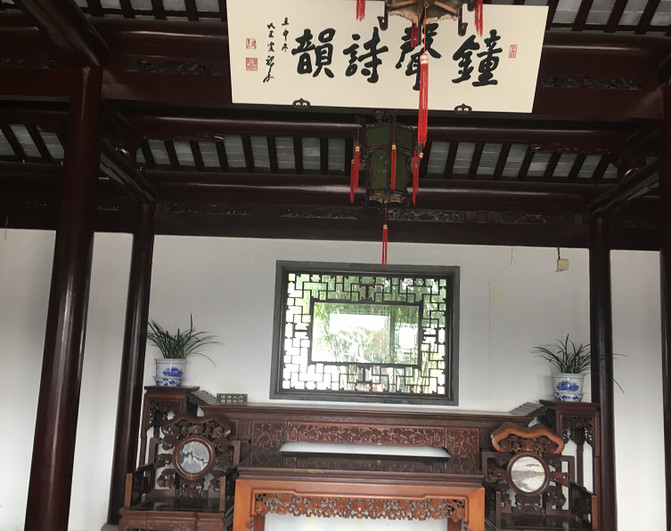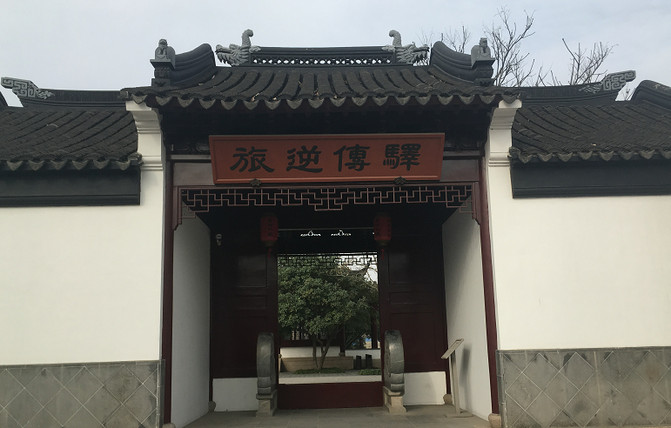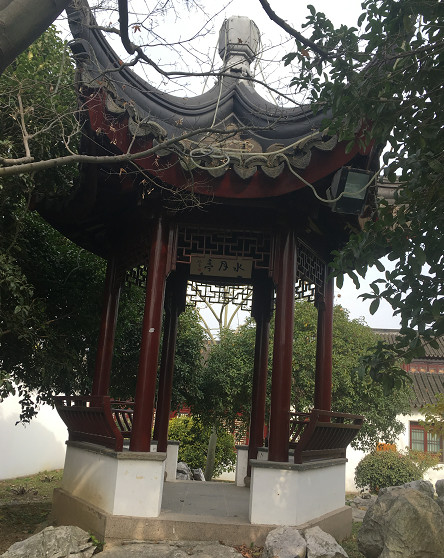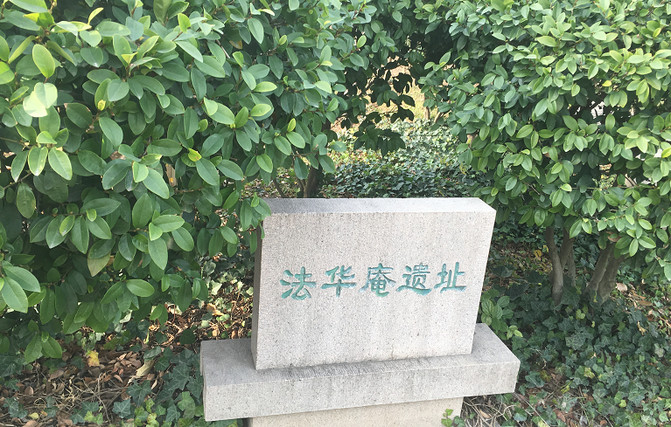Maple Bridge, Zhang Ji moored at night against Han Feng
★ Tourist location: Suzhou Fengqiao Scenic Area
"The moon sets, the dark cries and the frost fills the sky, and the river maple and the fishing fire are sleeping sadly. Hanshan Temple outside Gusu City, the passenger ship arrives at midnight." Zhang Ji, a poet of the Tang Dynasty, wrote a seven-masterpiece "Maple Bridge Mooring at Night", which made Maple Bridge famous all over the world.

Fengqiao Scenic Area is located in the western suburbs of Suzhou, located in Suzhou District. Walking into Maple Bridge, you will see a gorgeous passage composed of palace lanterns and fan shapes. The horizontal inscription "Maple Bridge Moors at Night" is really too widespread! Of course, the Maple Bridge Scenic Area itself became popular with the help of this poem.

Yuyin Bridge spans the ancient canal and connects the isolated island on the Grand Canal. On the bridge is a building with double eaves and hilltop. Qiaodong is a relic of the famous Yuyin Xiaopu in the Qing Dynasty, hence its name.

Standing on the bridge, you can see the scenery on both sides of the Grand Canal. There are still a few leaves left in the willow trees in winter, and of course, there are also trees with only bare branches left. A pleasure boat was approaching slowly, and I seemed to see a poet with a wide robe standing at the bridge of the bridge, playing the song "Night Mooring on Maple Bridge" across the flute, although it was still broad daylight.

Turning left off the bridge is the South Pier, which is also the southernmost tip of the canal island. There is a group of water posthouse corridors along the river, with some inscriptions hanging on the walls.
There is a Tang lantern beside the bridge and placed on a high platform. Hexagon, cast in copper, weighs six tons and is six meters high. The two sixes symbolize sixty-six dashun and are an iconic landscape in the southern part of the scenic area.

At the western end of the island is the canal post road. However, because most of the attractions are concentrated on the east coast, tourists still choose the east road with tacit understanding. Baochun Xuan is built next to the water, open on all sides, and has a wide view. Spring flowers such as spring spring and crabapple are planted around, so the name is "spring spring".

Jiang Feng Cottage is actually not a house built of grass. It is also an antique building. It takes the poetry of "Jiang Feng fishing fire versus sorrow for sleep". It is a place for the owner to receive guests and gather gracefully.

There is also a building decorated with bamboo curtains. I only know the word "Sinology". It is probably a place where Sinology is promoted, right? The layout was very simple, except that a spoon and pen holder were placed on the table, both of which were blue and white porcelain. After reading the introduction next to me, I realized that this was the place where Duan Yucai built a garden on the bank of Fengjiang River and lived in seclusion. This exegesis who caused a sensation in the literary world with his "Shuo Wen Jie Zi Zhu" was from Jintan, Jiangsu Province. In his later years, he called himself an overseas Chinese Old Man Wu. Probably because he lived in seclusion in Suzhou?

Yizhiyuan is a rectangular building. I wondered for a while before realizing that we entered Yizhiyuan from the back door. Jiang Feng Cottage and others were all part of it. This was its door.

There is a Purple Bamboo Garden next to the house, with red maple leaves, which makes this group of buildings colorful. Maple Bridge is full of celebrities. Maple Bridge should have been very prosperous at that time. I don't know why these celebrities chose to live in seclusion here. Wen Zhengming, Duan Yucai, Yuan Yanshou, and Yin Feichun all have hidden worries here.

The Wumen Ancient Rhythm Theater is the main building in the central part of the scenic area. The top is a dragon and phoenix carving shed roof, and the ears on both sides are for entrance and entrance. The doors and windows are all carved flower windows, which itself looks very exquisite and elegant. The plaque on the stage titled "Ancient Rhyme of Wu Gate" was inscribed by Zhang Chonghe, which leads to Hanshan Temple.
Zhongyun Tower is a two-story building, just beside the Jiangcun Bridge. From here, you can pass through Jiangcun Bridge and enter Hanshan Temple Scenic Area. Of course, we were not willing to walk out of the scenic spot like this, so we retreated from the bridge and continued to walk along the canal. Presumably, the bell of Hanshan Temple can be heard clearly here. After all, people's bells can reach passenger ships at midnight!

The Water Transport Exhibition Hall uses classical copperplates to show the history of water transport, focusing on the provinces and cities it passed through. After all, the main means of transportation in ancient times were ships. On the east side of Jiangfeng Square, South Banyan Lane and North Banyan Lane are paved in the south and north. This alley along the river consists of street-crossing buildings and residential buildings. Jiangfeng Painting Academy was founded here by young and middle-aged painters and painters in Suzhou, and it also adds some modern calligraphy and painting to Fengqiao.

To the end of Banyan Lane is Yuyin Village. I wonder if there was a village here that relied on fishing for a living, but now this one is obviously built for the sake of antique times.

The island leaves only a narrow post road at the Bell Bridge, which connects the two ends. This bridge is very long and elegant. The entire bridge is made of wood. From the bridge, you can have a full view of the famous Maple Bridge. The beautiful bridge shape and simple shape are actually just because of the song "Maple Bridge Mooring at Night" that makes it the most famous ancient bridge in Suzhou.

After hearing that Zhong Qiao is a place of sorrow and sleep, Zhang Ji's poem is indeed very fully used. In fact, listening to the clock also comes from this poem.
There is also a small pavilion next to it called the "Water Moon Pavilion". Inadvertently, it will be missed. Of course, there is nothing great about missing it. Apart from expressing the feelings of night and night, the pavilion itself has no characteristics.

Next to the pavilion is Tang Yin's poem stone. Tang Yin was the first of the four great talents in Suzhou in the Ming Dynasty. He also often visited Fengqiao and of course left many poems. This poem is carved with his poem "Feeling on Maple Bridge", and there is also a copper statue of this talented person sitting crazily.

The official reception hall was used in the old days for officials and dignitaries to stay and rest for a short time. Because Fengqiao is located in the fortress of the Beijing-Hangzhou Grand Canal, and the water and land official roads meet here, dignitaries and officials naturally have more exchanges. It is also very appropriate to set up an official reception hall.

The night berth is the legendary place where Zhang Ji took a boat south to take refuge and anchored his boat at Maple Bridge. Here, he chanted "Night berth at Maple Bridge". The moonlight is hazy, the fishing fire is littered, and the bell is lingering. How can it not arouse the poet's strong nostalgia? The inscription is carved against the wall, and the entire poem only has twenty-eight words.

This poem was written by Shen Du, a famous calligrapher in the early Ming Dynasty. He was called "Wang Xizhi of my Dynasty", which shows his high calligraphy achievements. In the History of the Ming Dynasty, there is a biography of Shen Du. His younger brother Shen Can was also good at writing and lived with ease, while Can won with ease. At that time, he was known as the "big and small scholar".

Turn around and you will find the famous Maple Bridge. The entire scenic area has done enough about Maple Bridge. The bridge was originally named Fengqiao, but there is no way to verify the date when it was built. It is itself a single-hole stone arch bridge with a span of 11.5 meters and a width of 5.2 meters. The name of the bridge was built after Zhang Ji's "Maple Bridge Night Mooring" and was called Fengqiao before the Tang Dynasty. Since the Song Dynasty, Duke Wang of Huan wrote Zhang Ji's poems and carved them into stone tablets, he wrote Maple Bridge, which has been passed down to this day. Since the publication of Zhang Ji's poem at night, Maple Bridge has attracted literati and literati from past dynasties to recite poems. Since then, there are 40 poems about Maple Bridge. Maple Bridge was destroyed many times after its completion. The current bridge was rebuilt in the sixth year of Tongzhi in the Qing Dynasty. The words engraved on the bridge are of course already "Maple Bridge".

Walking through Maple Bridge leads to Tielingguan, which is also an integral part of Maple Bridge Scenic Area. From Tielingguan, you can walk out of the scenic area and go to Hanshan Temple.
Back on the island, there is Suyi Celebrity Square next to the bridge. It is a restored ancient street of the Ming and Qing Dynasties. It is used to display handicrafts and perform production skills, allowing tourists to see some folk customs of Wu. Fengqiao was originally a transportation fortress. In the water transport era, commercial activities here should have been very prosperous. The rice shops, pawn shops and other shops on this street are all quite large in scale. I wonder if they are the same. There are paintings and real scenes, which are very realistic.
Fengqiao Shuimayi is the exhibition hall of the Canal Post Station, recreating historical scenes such as the dissemination of government orders, material transportation and reception by officials. So, the buildings such as the Reception Hall that we just walked through are also part of Shuima Posthouse?

Jinghong Ferry is the northernmost tip of Fengqiao Scenic Area. The Grand Canal is divided into two tributaries by the small island, which meet again here. The terrain here is relatively open, allowing you to have a panoramic view of the canal. There are also statues showing some scenes of trackers transporting goods back then, carrying large bags of rice grains with their backs bent.

On the way back, we took the post road, and also walked an ancient path, returning to Yuyin Bridge again. Across the bridge, there is also the site of Fahua Temple, which has not been rebuilt for some unknown reason. Maybe Hanshan Temple is too famous. Fengqiao and Hanshan Temple are enough.


Poetry to remember:
Zhang Jifeng Bridge once docked at night,
Qingyin's fame shook China.
Outside the Iron Bell Pass, the rainbow crossing is shocking,
The shadow of the tower and the pine wind accompany the building.

























Previous Article:Encounter the Misty Rain Jiangnan--Suzhou Qili Mountain Pond
